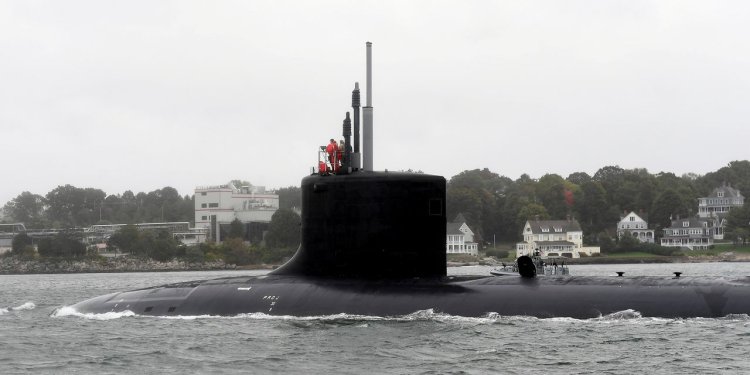The U.S. Submarine Fleet Is Underwater
Selling subs to Australia is a good plan, but the U.S. needs to build more. By The Editorial Board July 28, 2023 6:17 pm ET The U.S. Navy Virginia-class fast-attack submarine USS Oregon Photo: Po2 Wesley Towner/U.S. Navy/Zuma Press Here’s an ominous illustration of America’s growing security problems: U.S. Navy attack submarines are excellent weapons for devastating America’s enemies, but the fleet doesn’t have enough boats and is in serious disrepair. Republicans in Congress are right to ask President Biden to address this crisis as part of a deal to sell subs to the Aussies. The Senate passed an annual defense policy bill on


The U.S. Navy Virginia-class fast-attack submarine USS Oregon
Photo: Po2 Wesley Towner/U.S. Navy/Zuma Press
Here’s an ominous illustration of America’s growing security problems: U.S. Navy attack submarines are excellent weapons for devastating America’s enemies, but the fleet doesn’t have enough boats and is in serious disrepair. Republicans in Congress are right to ask President Biden to address this crisis as part of a deal to sell subs to the Aussies.
The Senate passed an annual defense policy bill on Thursday night, and one debate this week has been the Aukus deal with the U.K. to sell nuclear-powered submarines to Australia. Mr. Biden’s plan is to transfer three, and perhaps as many as five, Virginia-class boats, which are a big upgrade over diesel-powered subs. It’s great that an ally wants the subs to deter the Chinese Communist Party in the Pacific. The Aussies are also willing to chip in for the industrial base production and maintenance.
But the U.S. Navy is already short on attack subs. The Navy’s goal is 66 hulls, but the current inventory is 49, which may shrink as older models age out of service. Congress has been trying to buy two new boats a year, but the industrial base is churning out only 1.2. No one in the Biden Pentagon has the faintest proposal to scale up in short order. The Navy’s shipbuilding plan this year featured three options for a future fleet, and in only one does the sea service ever reach 66 attack subs—in 2049.
It gets worse. Only 31 U.S. attack subs were operationally ready in 2023, according to recent data from the Congressional Research Service. Some 37% of the fleet is either in maintenance or collecting rust awaiting repairs. That’s nearly double the Navy’s 20% maintenance goal, and it’s up from 19% in fiscal 2015.
The threat from Beijing is rising as President Xi Jinping wants the return of Taiwan by 2027. Attack submarines offer a competitive edge in that they could sink the Chinese fleet in the Taiwan Strait. The Communist Party knows that the more U.S. subs there are lurking under the waves, the harder an assault on Taiwan would be.
The Aukus deal has bipartisan support, and the Biden Team wants Congress to approve the sale of subs to Canberra. But Sen. Roger Wicker was right to suggest recently on these pages that the President needs to propose supplemental funding to help the U.S. submarine industrial base increase production.
None of this is a knock on the Australians, who understand that the big stick to deter China is a powerful U.S. military. Australian sailors are still learning the ropes at nuclear-power school, which means Mr. Biden has the time to put forth new investment.
The problems in the U.S. submarine force are the product of decades of political and institutional neglect: buying too few hulls in peacetime and shrinking maintenance capacity. They can't be fixed quickly or on the cheap, and one priority is building more yards.
“If the Administration is serious about making Aukus a success,” Sen. Mitch McConnell said on the Senate floor on Thursday, “it should work with Congress this fall to make urgent supplemental investments in meeting military requirements in the Indo-Pacific.” Expanding the U.S. attack submarine fleet would be a national achievement that would make the oceans and the U.S. homeland safer.
House Republicans passed the National Defense Authorization Act (NDAA) on July 14, after a debate that highlighted military priorities versus cultural issues. Images: Getty Images Composite: Mark Kelly The Wall Street Journal Interactive Edition
What's Your Reaction?













